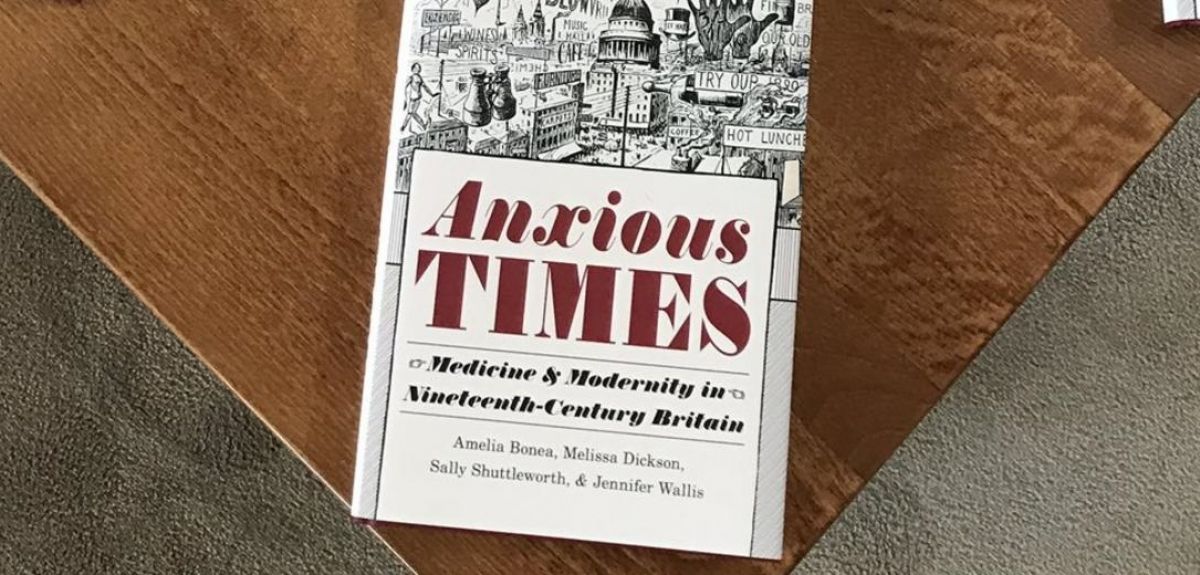
Research on Victorian anxiety is an FT business book of 2019
The Financial Times has just released its list of Business Books of 2019.
The list is mostly comprised of titles you would expect to see on CEOs’ shelves, such as books on management and big technology firms.
But one stands out from the rest: a book based on Oxford research into life and health in the Victorian times. It turns out Anxious Times: Medicine and Modernity in Nineteenth-Century Britain has a lot to teach us about modern life.
Written by Dr Amelia Bonea, Dr Melissa Dickson, Professor Sally Shuttleworth and Dr Jennifer Wallis, the book emerged out of the Diseases of Modern Life: 19th Century Perspectives research project at Oxford University.
Funded by the European Research Council, the project was led by Sally Shuttleworth, Professor English Literature at St Anne’s College. The project looks at how literature, science and medicine reflected the stresses of a rapidly changing society, finding many interesting parallels to our own.
Professor Shuttleworth was 'delighted' to hear the book was named in the list. She said: 'It was very unexpected. That said, when writing the book and running the project, we were very aware that the themes we were looking at are concerns for public health and business at the moment.'
In the FT's list, they say Anxious Times "makes the fascinating case that the stress and anxiety of the Victorians…foreshadowed our own age's problems with burnout and disruption".
Speaking about these parallels, Professor Shuttleworth said: 'I think it's of huge relevance to today's audiences and thinking. We spent time looking at what we now call "executive burnout", but that back then was called "overpressure".
'This had a lot to do with the coming of the telegraph, suddenly you had to work on a much wider, global scale, and you could be inundated with telegrams at all hours of night and day. Businesspeople in London would often even have telegraphs in their own homes, which really added to the pressures.'
If this sounds familiar – perhaps you too struggle from being always a phone call or email away from work - then you’re starting to understand a key parallel between modern day and Victorian times: the speed of technological change.
'I think every generation has a sense that things were better somehow in the past, but there are very strong parallels between now and the 19th century,' said Professor Shuttleworth. 'It's down to the rapidity of the change; if you think about that period, they went from being overwhelmingly agricultural to an industrial society in around 50 years.
'The railways carpeted the country, and with the creation of global telegraph lines, suddenly a letter that would have taken six months to get to Australia can be telegraphed in a matter of minutes. So the shift in how you orient yourself in the world and in your understanding of time and space is just remarkable. And I think that’s the same kind of issue we're coping with now.'
There are further similarities in the sheer amount of information available. The advent of the steam stress meant that people felt they were bombarded with print, while the new penny post led to a surge in advertising. We're seeing an echoing of that now, with concerns about how much space we have left where we’re not consuming information or being sold something.
Professor Shuttleworth recounted one story where: 'There's this wonderful description of a doctor being unable to eat their breakfast there were so many advertising flyers for drugs companies all over his table. So there was that same sense of being pressured to buy.'
It’s not just the similarities that may surprise readers. Anxious Times also uncovers some key differences in societal attitudes. Professor Shuttleworth explained: 'One of the big surprises was the way people were so sympathetic to sufferers from "overpressure" or "overwork".
'They accepted breakdowns as not being shameful, and would send executives off to health resorts for six months or more to recover. There was an understanding that convalescence required substantial time. I think that’s something that’s been completely lost.'
Given that kind of surprise, it becomes even clearer why this is vital reading for business. Professor Shuttleworth said: 'I think the lessons are that you shouldn't worry things are unprecedented. You can gain greater understanding of today's problems by placing them in historical perspective.
'There are also lessons to be learned from the ways in which the Victorians addressed the problems of industrial pollution which they had created, with local public health or 'sanitary' groups across the country getting together to measure air and water pollution, for example, and campaigning for legislation to control factory smoke,' she added.
'We tend to think of the "green city" movement as a creation of the twentieth century, but it also has its origins in the Victorian period. I was quite surprised and delighted to find all that!'
The Diseases of Modern Life research project has also had recent success in winning an Oxford Preservation Trust Award. Their Victorian Speed of Life light and sound show for Victorian Night Light was just named Best Temporary Project.
You can watch this in the video below, which uses projection and narration to give a whistle-stop tour of the research that went into the book.